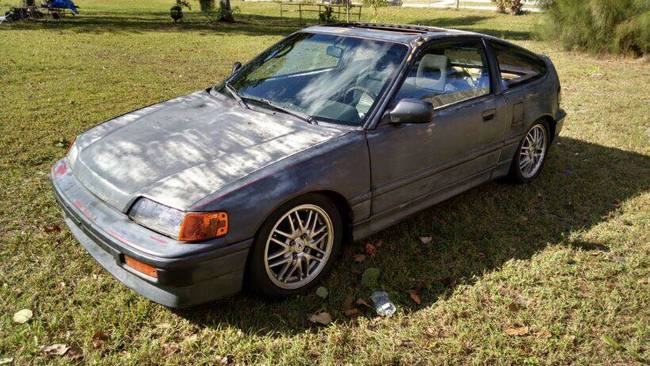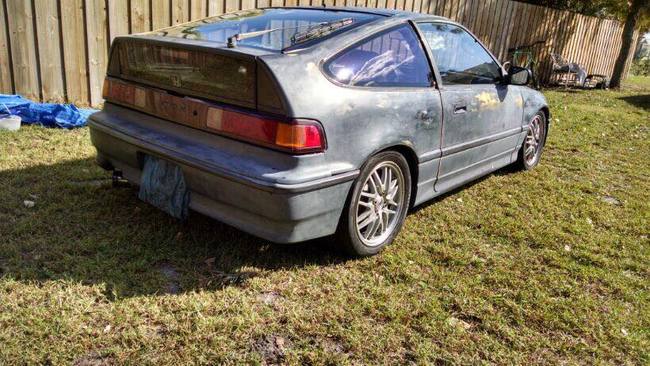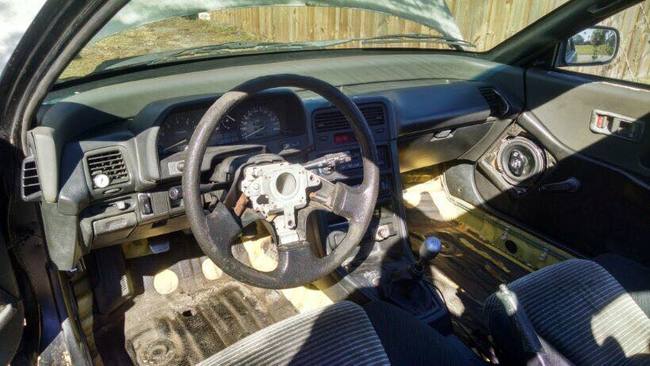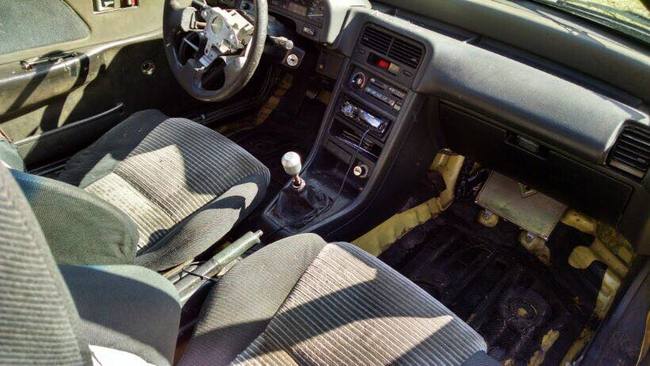In this post, longtime friend of King Motorsports Russell Laviolette completes his amazing reunion story. Continued from Part 1. Thanks Russell!
==
Fast forward to 2015. I’ve since sold the Civic Hatchback and purchased a 2000 Acura Integra LS. It’s a fantastic car. But the problem is it isn’t “my” car. At least not my *first* car. It’s not *my* blood, sweat, and tears that linger on its chassis, though I’ve spilled my fair share.
About two years ago, I began the search to find my first car. I’ve heard stories before of guys doing the same, but my hopes weren’t high for this one. CRXs aren’t treated as well in their old age as Barracudas and Camaros are. Searching Craigslist, Autotrader, and forums every night for weeks came to no avail. This year I began to intensify the search and enlisted the help of two communities on Facebook - CRX Community and CRX Owners Group. I knew from a quick VIN search on the state DMV that the car was still in the state and had been recently registered. This gave me tremendous hope the car was still drivable and potentially in an acceptable condition. Many of the guys in the aforementioned groups were tremendously helpful. Many went right to work for me and started looking in their hometowns, local Craigslists, and other Facebook groups.
One gentleman went above and beyond. He offered to run a more thorough VIN check on the car using a paid service (CarFax, etc.), and we identified that the car was about two and a half hours from my home. Coincidentally, the car was located in the very same city as the gentleman who offered to check the VIN. This was surreal at this point and I was optimistic. But what now? It felt like a dead end. He was motivated to help me find the car and even joked about driving around the city until he found it. It was a bit agonizing at this point. I knew what city the car was in, however, I obviously couldn’t just drive down and stalk the town for a little black CRX.
Yes.
Black.
At some point one of the owners decided to paint the car. This saddened me. I knew this as it was identified when the car was last registered. This only complicated things further. Yellow CRXs are rare and easy to spot. Black CRXs are not. For several weeks users on these groups would tag me in For Sale threads, send me Craigslist links, or message me pictures of CRXs all over the South Eastern United States - but all for naught.
Then, a promising lead.
A member of one of the CRX groups tagged me in a listing for a CRX that was for sale in a South Florida Classifieds group. I messaged the seller immediately and heard back from him pretty quickly. We spoke a little about the car, and I asked if he could provide the VIN number. He says he’ll do so as soon as possible, and we continue to talk about the car. Pictures show the sad state this particular CRX is in. It’s been painted black, but it seems as if even the rain is causing the low quality coating to wash away. He tells me he’ll have the VIN shortly, and I wait in eager anticipation. I ask specifically for the four numbers at the end of the VIN as I know that these represent the chassis number that rolled off the assembly line, and no two cars will share this four number sequence. We continue to chat about the car. He tells me “all” the issues the car currently has (I’ll get back to this), but to me it doesn’t really matter.
Motor’s blown. *Don’t care.*
Sunroof panel’s missing. *Probably rusted anyways.*
Interior is trashed. *I plan to replace it.*
The text arrives containing a picture of the VIN.
“5137” are the last four digits.
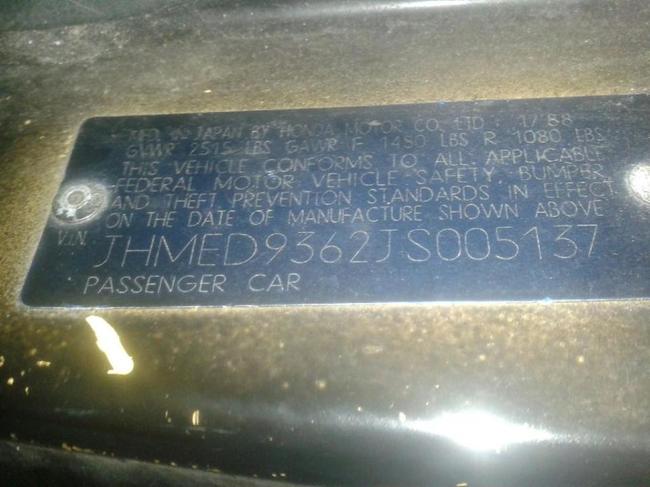
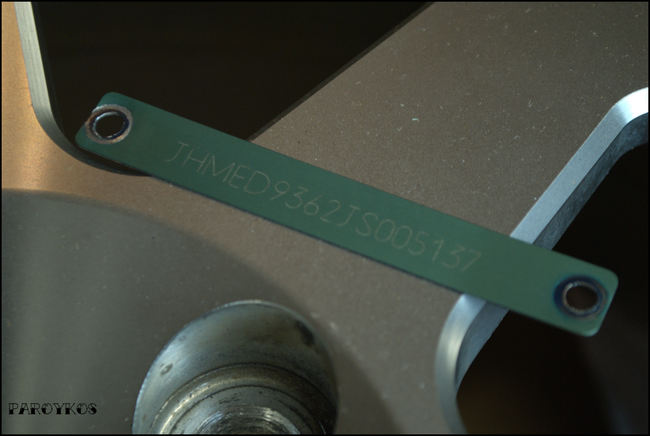
My heart palpitates. This is my car. My very first car. It’s been almost ten years since I gave it away. We continue to talk further, but I keep my cards close and don’t reveal what’s really going on so as to not be taken advantage of. He starts to note that he has local buyers who are offering a $100 more, and he wants to sell to them. I have to lay it all on the table now. I tell him the history of the car and my relationship with it. Frankly, he doesn’t care. He wants the money. We agree on a price, but I’m concerned any minute he’ll sell to local buyer. I make an appointment to pick the car up a couple days later and hope he doesn’t sell it from under me. A great friend has offered his truck and trailer and says the night planned won’t work for him, and he wants to do it sooner. At first it’s one night sooner than planned. We then realize that very night is the best for both of us and I excitedly acquiesce. The plan is in place. I’ll head to his shop after work and we’ll make the two and a half hour drive to south Florida to recover an old lost friend. We set out, and I’m just as giddy as the first time I made the journey to pick up this black and yellow bombshell.
A lot has changed since this car left my possession. My then girlfriend and I have split. I found a wonderful new woman, married her, and finished college. Started my career and had two beautiful little girls (one just last week as I write this). This car was a link to the past that I remember with fondness. The trip takes us longer than expected, and we make a stop at Publix supermarket for a very late dinner. Part of the fun of this trip was talking about cars - about the future of this particular car and all my plans and aspirations. We arrive a few minutes later and it’s in worse shape than I expected. It will require an enormous amount of work, but I knew that and that’s okay.
At this point in my life I am in a better position to do all the things I want to that I couldn’t when I was 17. High quality Japanese wheels (likely Mugen). As many new old stock OE parts as possible. Thorough bodywork and paint. Anything necessary.
As I mentioned before there were some things he didn’t disclose. The pictures showed a motor, but this isn’t the motor that would come with the car. The original block had received a VTEC head at some point and would eventually give up the ghost when a rod decided to exit through the side. He mentioned something about a “test pass” causing this. I estimate the original block had close to 400,000 miles on it at this point. It will make a nice coffee table. The front bumper was off the car so I could inspect the “frame.” The damaged I caused when I wrecked it many years prior was still evident. When I removed the rear bumper after returning home, I found the car was involved in a rear end collision at some point. This was quite disappointing. They attempted to repair the damaged metal with fiberglass. It was horrendous.
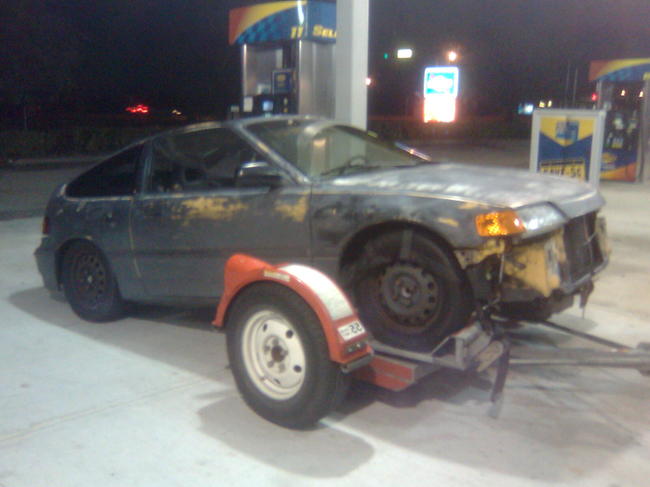
Nevertheless, when I began looking for this car I knew I would require the help of a fantastic community. This will be true of the restoration as well. This sport compact automotive scene often gets a bad name in this regard, but I have encountered numerous people who have gone out of their way to help me make this happen. Sure, I’ve encountered many who weren’t willing to help, but I press on. Those who have helped have certainly outweighed those who laughed at my efforts.
The plans are for a full OEM restoration with some exceptions. Mugen products will play a large part in the restoration of this car. But at the same time, I’ve begun to feel a bit nostalgic about many of the parts I’m considering replacing. The more parts I replace with “OEM new” the less it becomes “my” car. I’ve started to feel the desire to just restore some of the original parts. I know that requires more time and effort, but that just seems so much more appealing to me.
Despite it all, stay tuned for updates, and if you’re able to help in the acquisition of parts, especially new old stock OEM parts, please don’t hesitate to connect with me on Facebook. Additionally you can follow my build thread (that has been slow as of late) over on NWP4LIFE (http://forums.nwp4life.com/zerothread?id=49357).
Thank you for taking the time to read my ramblings and many thanks to King Motorsports for their continued support in this endeavor. Thanks are also due to Yoel Rodriguez, Brandon Katrein, Brian Cain, Kyle B., Ryan at Auto Fair Honda, Jose Chacon, Jason Haradon, Scott Zellner, Ronald Wu, and many others. Thank you all!
